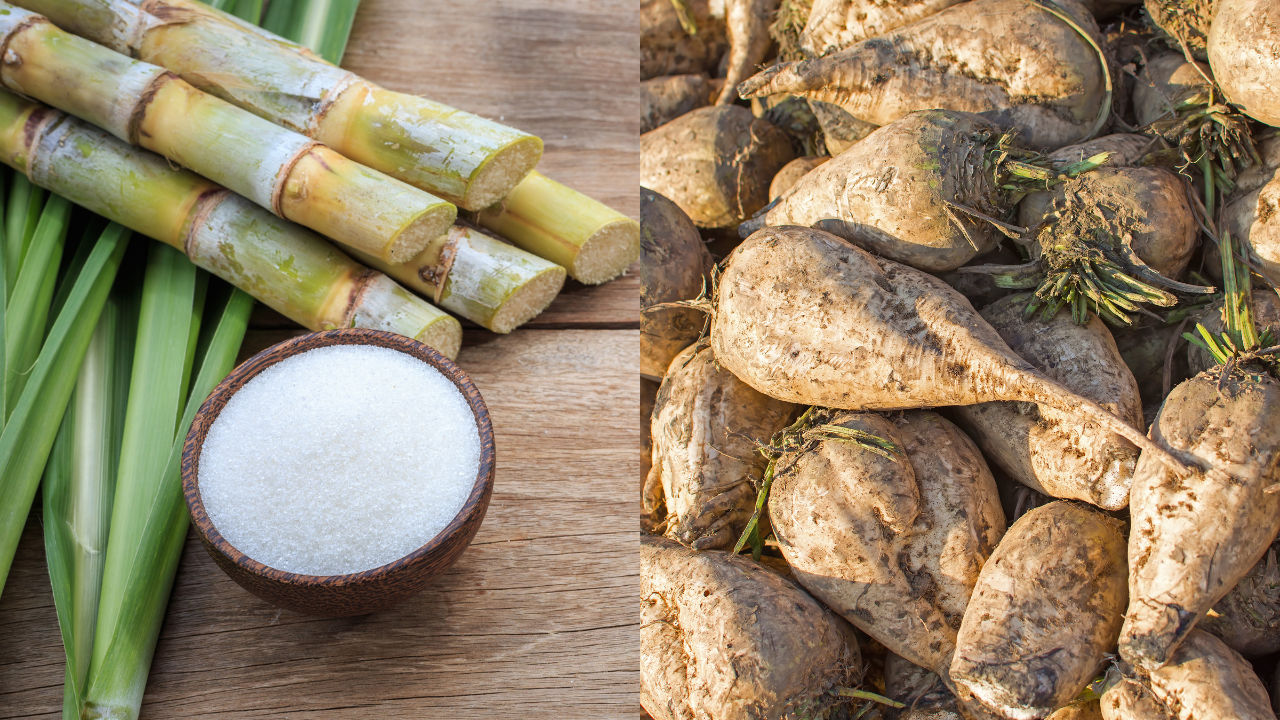Discover the Uses and Perks of Beet Sugar Vs Cane Sugar in Your Daily Diet Regimen
Checking out the unique top qualities of beet and cane sugar discloses greater than just their sweetening capacities; it highlights their distinct impacts on wellness and cooking arts. Beet sugar, understood for its refined taste, is commonly preferred in delicate treats, whereas cane sugar, with its tip of molasses, includes splendor to robust meals. Each kind holds its own nutritional account and glycemic ramifications, welcoming a much deeper understanding of their roles in a balanced diet regimen and sustainable consumption techniques.
Beginning and Production Processes of Beet and Cane Sugar

The distinctive climates and dirt types required for growing sugar beetroots and sugarcane add to distinctions in their cultivation techniques and geographical distribution, affecting the economics and sustainability of their production. beet sugar vs cane sugar.
Nutritional Contrast In Between Beet Sugar and Cane Sugar
Despite stemming from various plants, beet sugar and cane sugar are nutritionally extremely comparable, both largely being composed of sucrose. Each gives concerning 4 calories per gram, converting to about 16 calories per tsp. Structurally, both sugars are composed of roughly 99.95% sucrose, with minimal quantities of various other materials like dampness and trace minerals, which do not dramatically modify their dietary accounts.

Eventually, when selecting in between beet sugar and cane sugar based on dietary content alone, both deal the same benefits and drawbacks as they are essentially forms of the exact same molecule-- sucrose, giving fast energy without various other nutrients.
Influence On Health: Glycemic Index and Caloric Material
Checking out further into the impacts of beet sugar and cane sugar on health and wellness, it is important to consider their glycemic index and calorie material. The glycemic index (GI) of both beet and cane sugar is around 65, categorizing them as high-GI foods, which can create quick spikes in blood sugar degrees.
Each type of sugar includes about 4 calories per gram, making their caloric content matching. For those monitoring calorie intake, particularly when managing weight or metabolic wellness conditions, comprehending this equivalence is essential (beet sugar vs cane sugar). Excessive consumption of any type of high-calorie, high-GI food can add to wellness issues such as obesity, heart illness, and insulin resistance.
Environmental and Economic Factors To Consider of Sugar Manufacturing
Beyond wellness impacts, the production of beet and cane sugar likewise raises considerable ecological and financial concerns. Sugar beet growing often tends to require cooler environments and has a lower geographical impact compared to sugar cane, which visit the website flourishes in exotic areas. Both crops are intensive in terms of water use and land line of work, possibly leading to logging and water scarcity. Financially, the international sugar market is extremely volatile, affected by changes in global trade plans and subsidies. Many countries incentivize sugar production through financial backing, skewing market prices and influencing small farmers adversely.
Additionally, making use of pesticides and plant foods in both beet and cane sugar farming can cause soil deterioration and air pollution, additional influencing biodiversity and local water bodies (beet sugar vs cane sugar). The option in between cultivating sugar beet or cane frequently hinges on neighborhood ecological problems and financial aspects, making the sustainability of sugar manufacturing a complicated problem
Culinary Applications and Taste Distinctions
While the ecological and financial elements of sugar manufacturing are certainly significant, the selection in between beet and cane sugar additionally affects cooking applications and flavor accounts. Beet sugar, acquired from the sugar beet plant, is known for its incredibly neutral taste.
Walking stick sugar, removed from sugarcane, usually maintains molasses traces, which give an unique you can find out more splendor and deepness. This slight molasses taste enhances the complexity of baked goods, sauces, and sauces. It is particularly preferred in products where a caramel touch is preferred, such as in brownies or gingerbread. The slight variation in wetness content in between beet and cane sugar can influence the appearance and uniformity of dishes, making cane sugar a recommended choice for certain recipes that profit from its one-of-a-kind buildings.

Final Thought
In final thought, both beet and cane sugar have distinctive origins and production processes, providing comparable dietary accounts with small differences in sodium web content and flavor. While their impact like it on wellness, particularly concerning glycemic index and calories, is equivalent, the choice between them commonly comes down to environmental, financial factors, and details culinary needs. Recognizing these aspects can assist consumers in making educated decisions that line up with their health goals and flavor preferences.